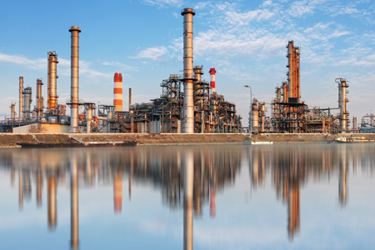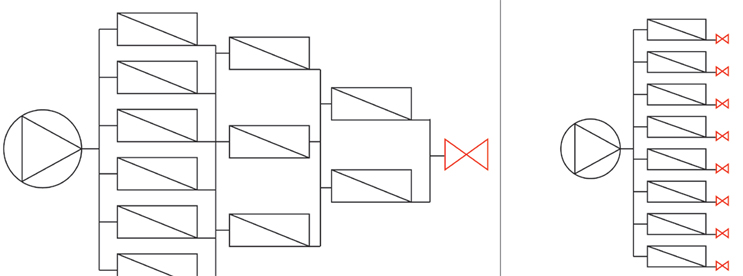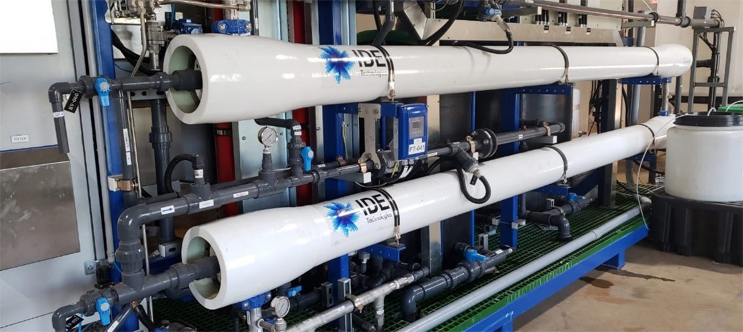Industrial Wastewater Reuse: From Vision To Reality
By Matan Alper

With the need for fresh water becoming ever more critical, an innovative treatment solution provides promise for cost-effective sustainability.
Water is a precious commodity that was once available almost free of cost. Unfortunately, this is no longer the case and water for industrial use has become costly and scarce.
Water is used for multiple purposes in all industries, and the vast amount of it ends up as industrial wastewater. There are several options for effluent disposal, some of which are direct surface discharge, evaporation ponds, deep well injections, discharge to a local wastewater treatment plant, and so on. However, all these solutions are costly and do not add any value to the plant’s operation.
Three main forces drive industries to search for new water treatment approaches and technologies — the cost and availability of fresh water to be used in the industry, the cost of effluent disposal, and the need to comply with stricter environmental regulations governing the discharge of industrial effluents.
These factors have made it critical for industries to look for and implement technologies to reduce the amount of fresh water withdrawn from natural sources by increasing wastewater reclaim, reducing effluent discharged to the environment, and cutting the operational costs associated with water treatment, while complying with regulations. As a result, there is a growing need for cost-effective solutions that maximize effluent treatment recovery and reuse of water in industrial facilities, while minimizing disposal costs.
Existing conventional water treatment solutions struggle to provide a satisfactory answer to these water challenges. One of the industry’s most significant barriers in addressing the growing water challenges is that the industrial effluents are typically characterized by very challenging water chemistries. This complex chemistry limits the ability to reach high recovery and maximized reuse due to the risk of scaling, fouling, and biofouling. Therefore, new technological approaches and out-of-the-box thinking are required to develop new, cost-effective solutions that can push industrial water reuse to its limit, thus solving many of the industry’s water challenges.
Pulse Flow RO vs. Traditional Reverse Osmosis (RO)
The key to reaching high water recovery and reuse of water is implementing cutting-edge treatment technologies that can handle challenging water chemistries. Conventional industrial water treatment solutions can be OPEX-intensive and often fail to minimize the amount of effluent for disposal. In addition, the conventional water treatment solution, and more so the RO part of it, hasn’t changed much over the previous few decades. This typically includes two to four stages of RO, operating at continuous and fixed hydraulic conditions, and is accompanied by frequent clean-in-place (CIP) and maintenance work, which is OPEX-intensive.
Pulse flow reverse osmosis (PFRO) technology is a new, innovative method for operating reverse osmosis water reuse systems that enable high recovery, high flux, and low OPEX. It works by constantly changing the osmotic and hydraulic conditions so that biofouling and scaling are greatly diminished.
Contrary to the standard multistage RO process, PFRO discharges the brine flow periodically, in a pulse flow process with short production cycles. At the end of each cycle the brine is discharged at high velocity for a short time. This enables the system to operate with very high recovery and reduced scaling potential by taking advantage of the ability to operate in short production cycles. The production cycle is shorter than the induction time of the sparingly soluble salts existing in the brine stream, therefore there is no risk for scale formation. In other words, a shorter production cycle facilitates higher recovery.
The Pulse Flow RO Method
PFRO operates in two steps: production and flushing.
During production, the brine valve closes and stops brine from being discharged. This results in 100 percent of the feed flow passing to the permeate side, or in other words, dead-end filtration.
During flushing, the brine valve is opened for a short period of time, enabling brine to discharge at a high velocity. This creates a high shear force of short and rapid pulses.

Figure 1. Conventional RO flow regime vs. pulse flow RO flow regime
PFRO does not deviate from standard membrane operating processes and is fully covered by membrane manufacturers’ warranties.
In a commercial-size RO train, production and flushing cycles are distributed among the pressure vessels in such a way that, in total, the feed, permeate, and brine flows are almost constant over time. The pressure vessels (PVs) are divided into groups. Each group has a single brine valve that periodically opens and closes. This way, only a small fraction of the PVs is in a flushing mode at any given time, enabling the high-pressure pump to operate in a stable working manner.
All vessels — both in production mode and in flushing mode — continuously produce permeate, and all pressure vessels receive feed flow from the high-pressure pump, in parallel. The total dissolved solids (TDS) levels of the feed streams do not change inside the first membrane of the pressure vessel, and variations increase at its end.
Unlike the conventional multistage RO train approach, the pulse flow RO is a single-stage RO train designed for any recovery (see Figure 2)

Figure 2. RO train structure — traditional (left), PRFO (right)
Conventional RO design includes multiple stages to maintain the required minimal brine flow in the last membrane of the pressure vessel. This multistage design includes some drawbacks compared to the PFRO configuration:
- Pressure drop (PD) during each stage is usually 1 to 1.5 bars (15 to 23 psi), resulting in a total PD of about 3 to 4.5 bars (44 to 66 psi) — causing increased power consumption.
- Flux decreases during the second and third stages, requiring additional pressure vessels and membranes or installation of booster pumps — causing increased CAPEX.
- Complicated inter-stage piping — causing increased CAPEX.
Case Study: BWRO Concentrate Minimization (Abilene, TX)
The Abilene Hargesheimer Water Treatment Plant receives water from a lake and desalinates via a three-stage brackish water RO (BWRO) process with a recovery rate of 80 percent. The brine flows into evaporation ponds. Due to the limited size of the existing brine ponds, the RO brine amount is reduced by an enhanced evaporation system involving sprayed water (turbo misters). This creates an environmental nuisance to the nearby residents due to convection of salt droplets by the wind.
Further desalination to reach higher recovery using conventional RO is not possible, due to the high calcium sulfate, calcium carbonate, and barium sulfate supersaturation. The goal set in the case study demo was to use PFRO technology to achieve an additional 80 percent recovery over the rejected brine from the conventional RO, to reach an overall recovery of 96 percent.

Abilene Hargesheimer Water Treatment Plant
Overview Of The Demonstration System
The PFRO demonstration plant in Abilene, TX, was composed of two 8” pressure vessels in series, each with 4 x Dow FILMTEC™ SW30-XLE-400 membrane elements in a single-stage operation. Feed water quality is shown in Table 1.

Table 1. Analysis of feed water into pulse flow RO
The unit operated with an average flux of 8.8 gfd (15 LMH) and with an 80 percent recovery in a single RO stage. The specific flux was ~0.040 gfd/psi.
The rejected brine from the existing RO includes calcium sulfate and calcium carbonate in supersaturation concentrations, such that it could not be further used by a standard RO process since the water is “out of range” for the software of the anti-scalant manufacturers.
Results And Discussion
The demo unit at the BWRO desalination facility at Abilene was in operation from March to June 2021. The PFRO system managed to achieve an additional 80 percent recovery on top of the existing 80 percent of the BWRO system, reaching a total recovery of 96 percent. In practice, this means that the brine for disposal was reduced by 80 percent and additional fresh water was produced for reuse. All the operating parameters (specific flux, head loss, and permeate conductivity) showed very stable performance. This indicates that there was no accumulation of scaling or fouling. The system operated as part of the 2,000 hours acceptance test.
Conclusion
The pressure is on to relieve the strain on natural resources, reduce operational costs in the industry, and minimize effluent disposal. As water for industrial applications becomes less readily accessible, the industry must look for ways to recycle and reuse treated water.
Reverse osmosis membranes are subject to scaling, fouling, and biofouling by dissolved and suspended substances that are present in industrial effluents. However, standard RO systems do not maximize recovery due to those challenges of complex industrial water chemistry. Innovative industrial water treatment technologies make it economically feasible to convert different types of industrial wastewater back into usable water for processes, making this treated water an asset again, rather than a potential financial and environmental liability.
The PFRO solution for industrial wastewater treatment overcomes the challenging limits mentioned above, thus providing added value in the form of substantially lower disposal costs, recovery of additional clean water for reuse, and, if needed, a smaller downstream thermal zero liquid discharge (ZLD) system, resulting in lower CAPEX and OPEX.
About The Author
 Matan Alper holds a B.Sc. in chemical engineering (summa cum laude) from the Technion – Israel Institute of Technology and an MBA from Tel Aviv University, where he specialized in strategy and entrepreneurship. Matan started at IDE Technologies in 2019 as a business development and product manager, and today, Matan is heading the industrial water business unit of the company.
Matan Alper holds a B.Sc. in chemical engineering (summa cum laude) from the Technion – Israel Institute of Technology and an MBA from Tel Aviv University, where he specialized in strategy and entrepreneurship. Matan started at IDE Technologies in 2019 as a business development and product manager, and today, Matan is heading the industrial water business unit of the company.
